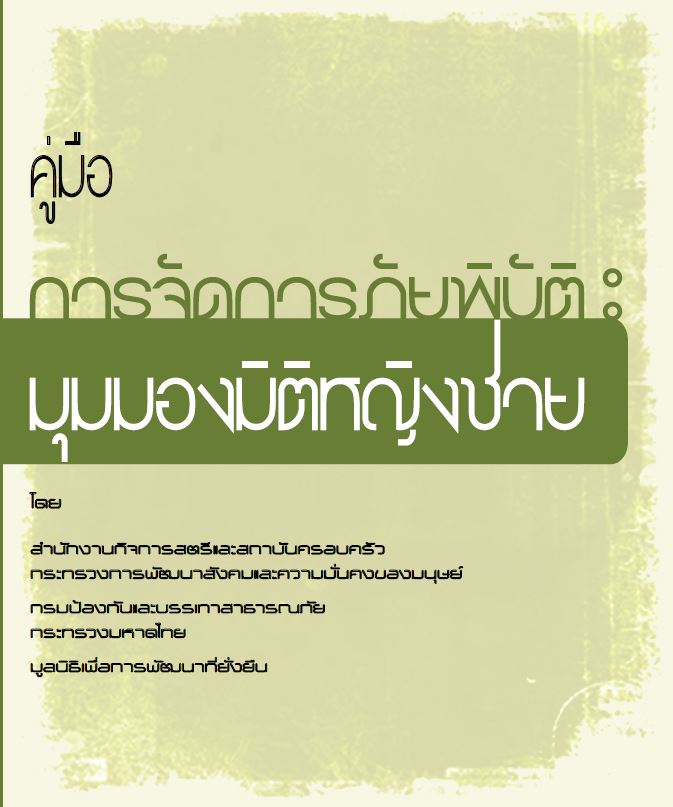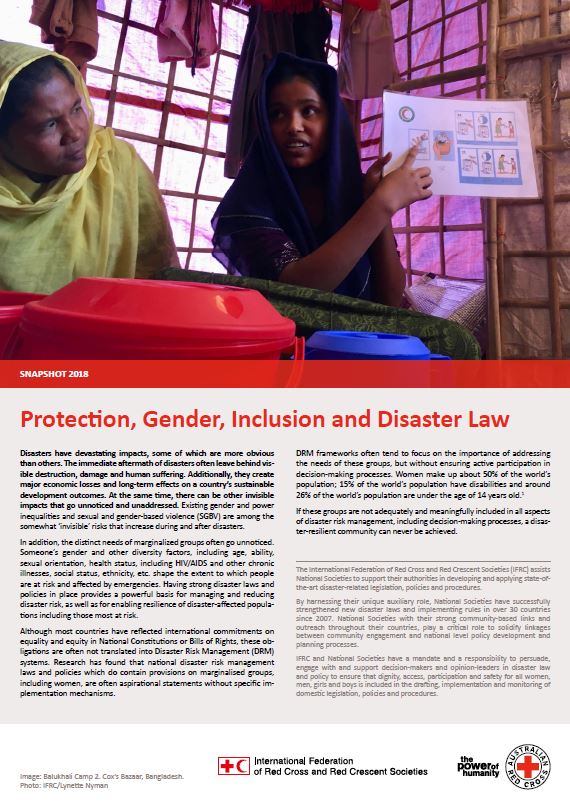Handbook on Gender Mainstreaming in Disaster Management [Thai language]
This handbook puts together the lessons learned from relief operations conducted by government agencies, humanitarian organizations, volunteers, and local communities to assist people affected by natural disasters. It presents the process and measures in mainstreaming gender in disaster management and response.
![]()
Protection, Gender, Inclusion and Disaster Law Snapshot 2018
Disasters have devastating impacts, some of which are more obvious than others. The immediate aftermath of disasters often leave behind visible destruction, damage and human suffering. Additionally, they create major economic losses and long-term effects on a country’s sustainable development outcomes. At the same time, there can be other invisible impacts that go unnoticed and unaddressed. Existing gender and power inequalities and sexual and gender-based violence (SGBV) are among the somewhat ‘invisible’ risks that increase during and after disasters.
Recognizing that disasters are not gender-neutral, and disproportionately affect marginalised groups, IFRC offers recommendations on how to support gender equality, protection, and inclusion in disaster-related legislation, policies, and procedures. Click here to read the full “Protection, Gender, Inclusion and Disaster Law Snapshot 2018.”
![]()



